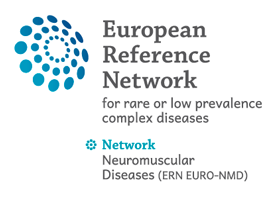31 Oct 2020
Metabolic shift underlies recovery in reversible infantile respiratory chain deficiency
Authors:
Denisa Hathazi, Helen Griffin, Matthew J Jennings, Michele Giunta, Christopher Powell, Sarah F Pearce, Benjamin Munro, Wei Wei, Veronika Boczonadi, Joanna Poulton, Angela Pyle, Claudia Calabrese, Aurora Gomez‐Duran, Ulrike Schara, Robert DS Pitceathly, Michael G Hanna, Kairit Joost, Ana Cotta, Julia Filardi Paim, Monica Machado Navarro, Jennifer Duff, Andre Mattmann, Kristine Chapman, Serenella Servidei, Adela Della Marina, Johanna Uusimaa, Andreas Roos, Vamsi Mootha, Michio Hirano, Mar Tulinius, Manta Giri, Eric P Hoffmann, Hanns Lochmüller, Salvatore DiMauro, Michal Minczuk, Patrick F Chinnery, Juliane S Müller, Rita Horvath
Reversible infantile respiratory chain deficiency (RIRCD) is a rare mitochondrial myopathy leading to severe metabolic disturbances in infants, which recover spontaneously after 6‐months of age. RIRCD is associated with the homoplasmic m.14674T>C mitochondrial DNA mutation; however, only ~ 1/100 carriers develop the disease. We studied 27 affected and 15 unaffected individuals from 19 families and found additional heterozygous mutations in nuclear genes interacting with mt‐tRNAGlu including EARS2 and TRMU in the majority of affected individuals, but not in healthy carriers of m.14674T>C, supporting a digenic inheritance. Our transcriptomic and proteomic analysis of patient muscle suggests a stepwise mechanism where first, the integrated stress response associated with increased FGF21 and GDF15 expression enhances the metabolism modulated by serine biosynthesis, one carbon metabolism, TCA lipid oxidation and amino acid availability, while in the second step mTOR activation leads to increased mitochondrial biogenesis. Our data suggest that the spontaneous recovery in infants with digenic mutations may be modulated by the above described changes. Similar mechanisms may explain the variable penetrance and tissue specificity of other mtDNA mutations and highlight the potential role of amino acids in improving mitochondrial disease.

